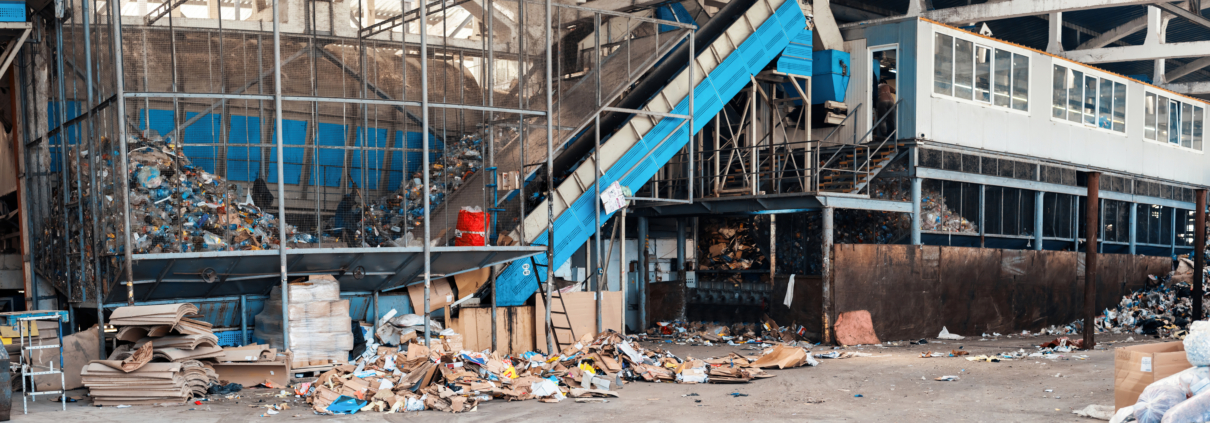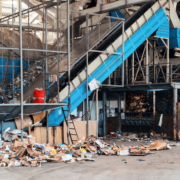Waste Management Plan: Key to Effective Recycling
 A waste management plan is critical for any organization looking for proper waste management. Its main objective is to ensure that the generation, treatment and disposal of waste is carried out in an efficient and environmentally friendly manner. This document makes it possible to identify types of waste, establish preventive measures and optimise resources. In addition, it facilitates compliance with regulations and contributes to sustainability by promoting recycling and reducing negative impacts.
A waste management plan is critical for any organization looking for proper waste management. Its main objective is to ensure that the generation, treatment and disposal of waste is carried out in an efficient and environmentally friendly manner. This document makes it possible to identify types of waste, establish preventive measures and optimise resources. In addition, it facilitates compliance with regulations and contributes to sustainability by promoting recycling and reducing negative impacts.
Importance of the Waste Management Plan
The adoption of a waste management plan is crucial for any entity committed to sustainability. This approach allows for the mitigation of negative impacts and significant optimization of the operation.
Impact on the Environment
An effective plan contributes to the protection of the natural environment by reducing waste. Proper management avoids soil, water and air pollution, thus preserving biodiversity and the health of ecosystems. Responsible management practices promote a cleaner and healthier environment.
Compliance with Current Regulations
Organizations must align with current environmental laws to avoid penalties. A clear waste management plan makes it easier to comply with local and national regulations. This not only protects the company from potential fines, but also improves its reputation in the market.
Resource Optimization and Cost Reduction
Implementing a well-structured plan allows you to maximize efficiency in the use of materials and resources. This translates into a decrease in operating costs, since the amount of waste generated is minimized and the reuse of materials is promoted. In addition, recycling products can generate additional revenue for the organization.
Components of a Waste Management Plan
A waste management plan includes several fundamental components to ensure proper and efficient treatment of the waste generated. Its essential parts are described below.
Forecast of Waste to Be Generated
It is crucial to make an adequate forecast of the waste that will be generated in daily activities. This aspect allows organizations to anticipate management and processing needs.
Different Types of Waste
- Solid waste: Discarded solid materials, such as packaging, paper, and plastics.
- Liquid waste: Liquids that are generated in industrial processes, such as oils and chemicals.
- Hazardous waste: Substances that can cause harm to health or the environment.
- Organic waste: Biodegradable waste, such as food and plant material.
Amount of Waste Generated
It is essential to estimate the amount of waste produced depending on the activity. This quantification will facilitate the planning of efficient treatment and recycling strategies.
Preventive Measures to Reduce Waste
Implementing preventive measures is key to minimizing waste generation. These actions can include the optimization of production processes and the choice of sustainable materials.
Facility Plans
Drawings representing waste management facilities are necessary to visualize waste flow and handling. These diagrams help to identify storage and treatment areas, ensuring correct management.
Preparation of a Waste Management Plan
The creation of an effective plan requires following well-defined steps to ensure its correct implementation and positive results in waste management.
Steps to Develop a Correct Plan
Different stages must be considered to ensure that the plan is functional and serves its purpose. Each phase requires particular attention to maximize the effectiveness of the plan.
Identification of Waste Generated
- It is vital to determine the different types of waste that will be produced, such as organic, recyclable, and hazardous.
- Accurate estimation of the amount of waste is equally crucial, allowing for more efficient planning of handling and treatment.
Setting Clear Goals
Defining concrete and achievable goals is essential to guide work in waste management. These objectives should be:
- Measurable to effectively assess progress.
- Adjustable, allowing modifications according to the results obtained and the operational context.
Waste Treatment and Actions to Be Carried Out
Once the waste has been identified and the objectives established, it is necessary to define how it will be managed, including:
- The actions by which the waste generated will be treated.
- The methodologies and techniques that will be implemented to ensure that the proposed objectives are met.
Tools and Practical Examples
Tools and practical examples are essential to facilitate the implementation of a waste management plan. These resources allow organizations to establish appropriate structures for waste management and promote sustainable recycling.
Waste Management Plan in PDF Format
A waste management plan in PDF format offers an accessible and standardized way to present the waste management strategy. This document may include:
- Data on the type of waste generated.
- Management objectives and goals.
- Specific actions for the reduction and recycling of waste.
- Procedures for evaluating the effectiveness of the plan.
Using a PDF format ensures that the content remains intact and is easily shareable among team members and stakeholders.
Word Templates for a Waste Plan
Word templates are a versatile tool for creating management plans adapted to the specific needs of each organization. These templates allow you to include:
- Customizable sections for waste identification.
- Spaces to set clear and measurable objectives.
- Forms for the monitoring and registration of the waste generated.
The use of templates simplifies the documentation process and provides a solid foundation for any organization that wants to improve its waste management.
Benefits of Recycling in Waste Management
The implementation of recycling practices has significant implications for waste management. The most outstanding benefits are described below.
Reducing Environmental Impact
Recycling contributes in a key way to reducing environmental impact. By recovering materials that would otherwise become waste, the need to extract new resources is reduced. This helps preserve biodiversity and decrease air, water, and soil pollution.
Recycling of Specific Materials
There are materials that are especially beneficial for recycling. Its correct management allows maximizing efficiency in the use of resources. Among the most common materials are:
Cardboard Recycling
Cardboard is one of the most recyclable materials. Its recycling process involves the collection, separation and transformation into new fibers. This not only saves energy, but also reduces the amount of waste in landfills.
Glass Recycling
Glass can be recycled indefinitely without losing quality. Recycling glass implies a significant reduction in the energy consumed in the production of new packaging. This process promotes the circular economy by reusing existing resources and minimizing environmental impact.
Need help developing or implementing an effective waste management plan? At Reverter Industries, we advise you at every step and have tailor-made solutions to optimize waste treatment and recycling. Call us today and find out how we can help you make your waste management more efficient, sustainable and aligned with current regulations. We are here to help you!





